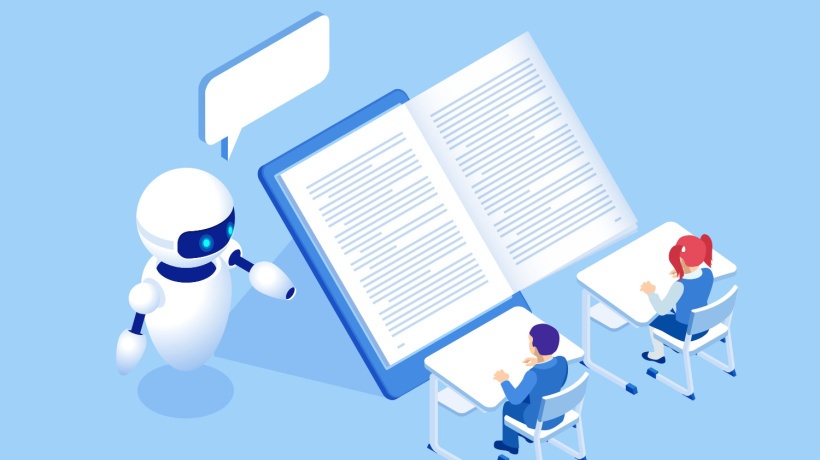How AI Is Shaping The Classroom Of The Future
As we continue to embrace digital advancements, education is experiencing a massive shift. With the rapid growth of eLearning, both students and educators are finding new ways to learn, teach, and engage with material. The classrooms of tomorrow will look vastly different from what we are familiar with today, and much of that change is being driven by emerging technologies, particularly Artificial Intelligence (AI). By 2025, we can expect even more significant changes in how education is delivered, with custom software development playing a pivotal role in shaping this future.
The Rise Of eLearning: A New Era For Education
The rise of eLearning has been a game changer for both students and teachers. What started as an alternative option has now become the primary mode of learning for many around the world. The flexibility of online learning allows students to learn at their own pace, access resources from anywhere, and engage with lessons in more interactive and meaningful ways. As a result, the demand for eLearning platforms has skyrocketed, leading to an increased need for custom software development tailored specifically for educational purposes.
However, custom software development is not without its challenges. One of the key issues faced by developers is the cost of custom software development. Education institutions and eLearning providers are often on a tight budget, making it crucial to balance affordability with the need for high-quality, functional software.
Building software that fits the specific requirements of an institution or an online platform requires extensive research, planning, and development. Costs can escalate quickly due to factors such as design, features, and scalability. This makes it essential for developers to understand the challenges in software development and prioritize features that enhance the learning experience while staying within budget.
Challenges In Software Development For eLearning
Developing software for the eLearning sector comes with its own set of obstacles. The unique needs of students, educators, and institutions often differ greatly, leading to complex requirements for customization. One of the biggest challenges is ensuring that the software is flexible enough to cater to various learning styles, yet robust enough to handle large-scale usage.
Additionally, incorporating cutting-edge technologies like Artificial Intelligence presents new hurdles. While AI is crucial for personalizing the learning experience, integrating it seamlessly into an eLearning platform requires careful planning. AI must be able to learn from students and adjust content based on individual progress and needs. This is no small feat, as AI must analyze vast amounts of data in real time, providing feedback that is not only accurate but also relevant to each student's learning journey.
Moreover, security is a pressing issue. Protecting sensitive student data while also allowing for smooth interactions between students and the platform is critical. This means investing in strong cybersecurity measures, which adds to the overall cost of software development.
Another challenge lies in ensuring accessibility. eLearning platforms must be designed to be usable by students with varying abilities and needs. Creating a truly inclusive platform requires thoughtful design and development, ensuring that every student can benefit from the platform, regardless of their physical or cognitive challenges.
AI Is Shaping Classrooms And The Future Of eLearning
One of the most exciting aspects of eLearning is the potential of AI to reshape the learning experience entirely. By 2025, we can expect AI to play a central role in education. One of the key areas where AI will make a difference is in personalized learning.
AI systems can learn from students, recognizing their strengths and weaknesses over time. By analyzing how students engage with material, AI can adjust the pace and difficulty of lessons, offer additional resources when needed, and even predict when a student is struggling. This level of personalization is something that traditional classrooms simply cannot offer at scale.
In addition to personalizing learning, AI will also assist educators by automating administrative tasks. Grading assignments, tracking progress, and identifying areas where a class might be struggling can all be streamlined through AI systems. This allows educators to focus more on teaching and less on paperwork.
By 2025, we may also see the rise of AI tutors. These digital tutors can provide one-on-one assistance to students, offering explanations, answering questions, and helping with difficult concepts. The use of AI tutors could make education more accessible to students who may not have access to private tutoring services.
However, these advancements come at a cost. Integrating AI into eLearning platforms requires significant investment in research and development, as well as ongoing maintenance to ensure that the AI continues to function effectively. For institutions looking to adopt these technologies, the cost of custom software development becomes a critical factor in deciding how much AI functionality can be incorporated.
eLearning In 2025: What To Expect
By 2025, eLearning will likely become even more integrated into our daily lives. Traditional classrooms may still exist, but they will be augmented with digital tools that allow for a blended learning experience. Students will likely spend part of their day in physical classrooms and part of their day learning through digital platforms, giving them the flexibility to engage with material in ways that suit them best.
Interactive learning experiences will also become the norm. Virtual Reality (VR) and Augmented Reality (AR) could play a larger role in eLearning, allowing students to participate in immersive simulations and real-world scenarios from the safety and comfort of their own homes. These tools could revolutionize fields like science, engineering, and medicine, where hands-on learning is essential.
In terms of content, we can expect more dynamic and engaging lessons. AI will help create personalized learning paths for each student, ensuring that they are always being challenged without feeling overwhelmed. Assessments may also shift from traditional tests to ongoing evaluations that adapt based on student performance, providing real-time feedback.
Additionally, custom software development will play a vital role in ensuring that eLearning platforms remain at the forefront of educational technology. As institutions demand more sophisticated features, developers will need to keep innovating to stay competitive. However, the challenges in software development—from rising costs to integrating AI—will continue to be a concern for many.
Conclusion
The future of education is digital, and eLearning will undoubtedly be at the center of this transformation. By 2025, the classrooms of tomorrow will look radically different, shaped by AI, interactive technologies, and personalized learning experiences. However, these advancements come with challenges, particularly when it comes to the cost of custom software development and ensuring that the platforms meet the diverse needs of students.
As we look ahead, the role of AI in shaping the classroom for students and tailoring lessons to their unique needs will be critical in helping eLearning platforms thrive. While the future of education may be uncertain, one thing is clear: eLearning is here to stay, and it will continue to evolve in ways that we are only beginning to imagine.








